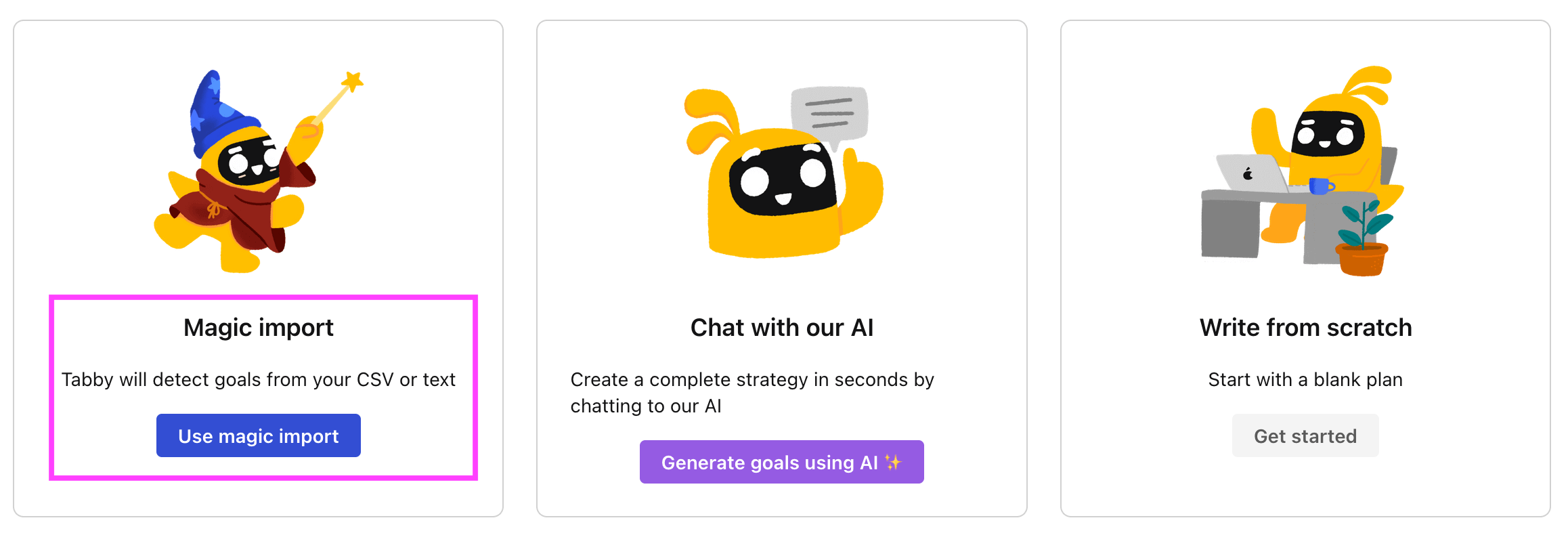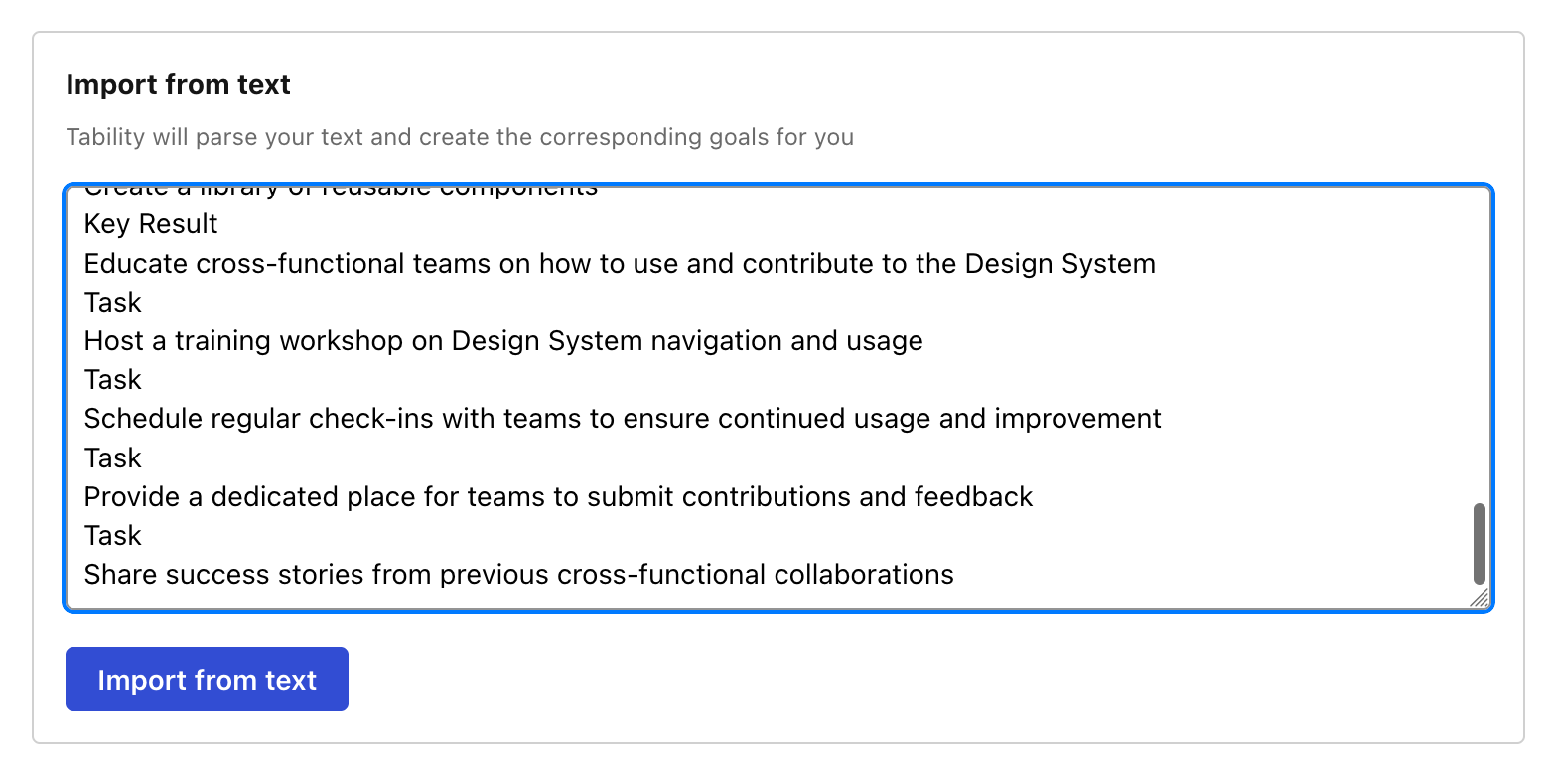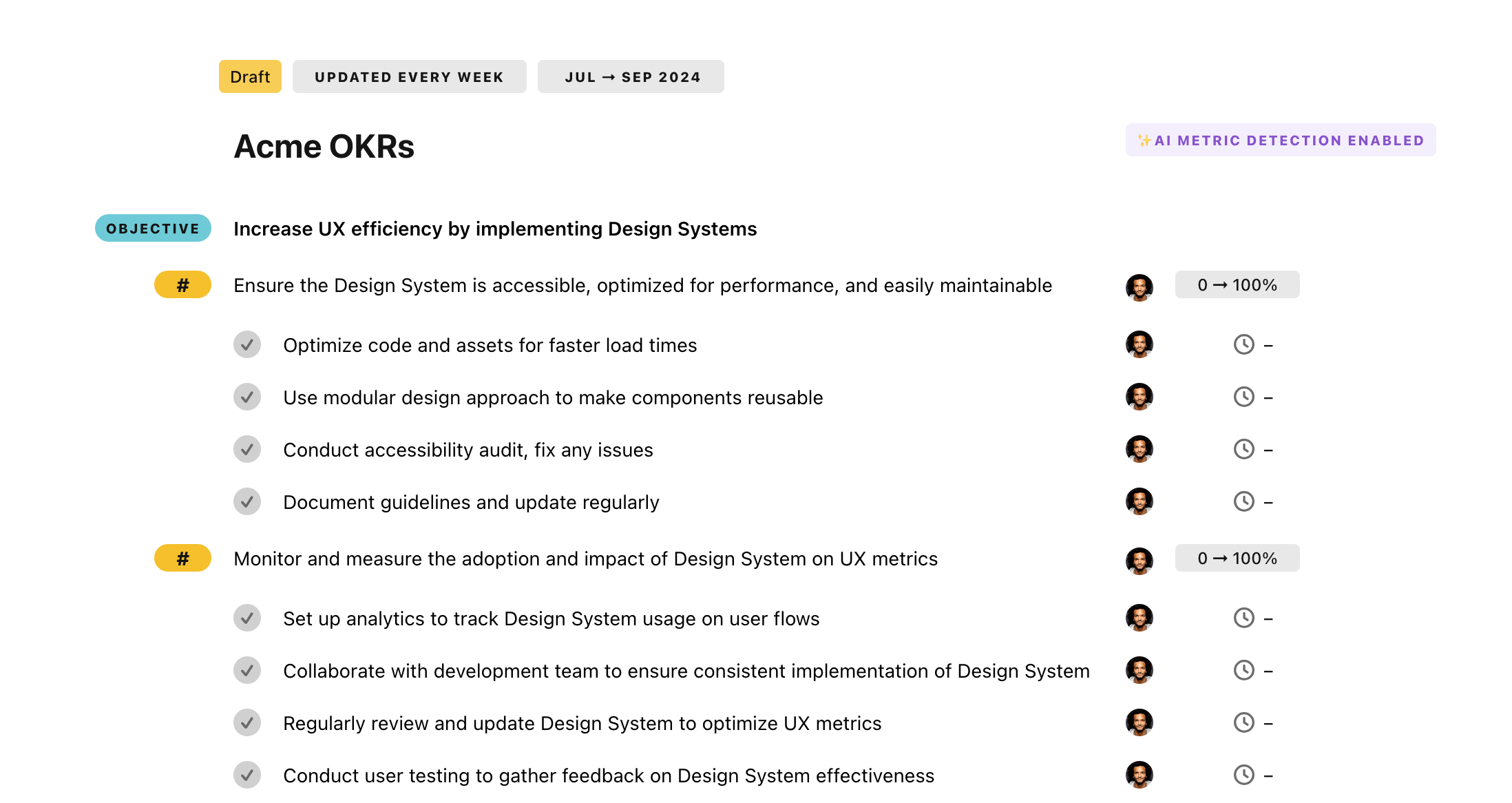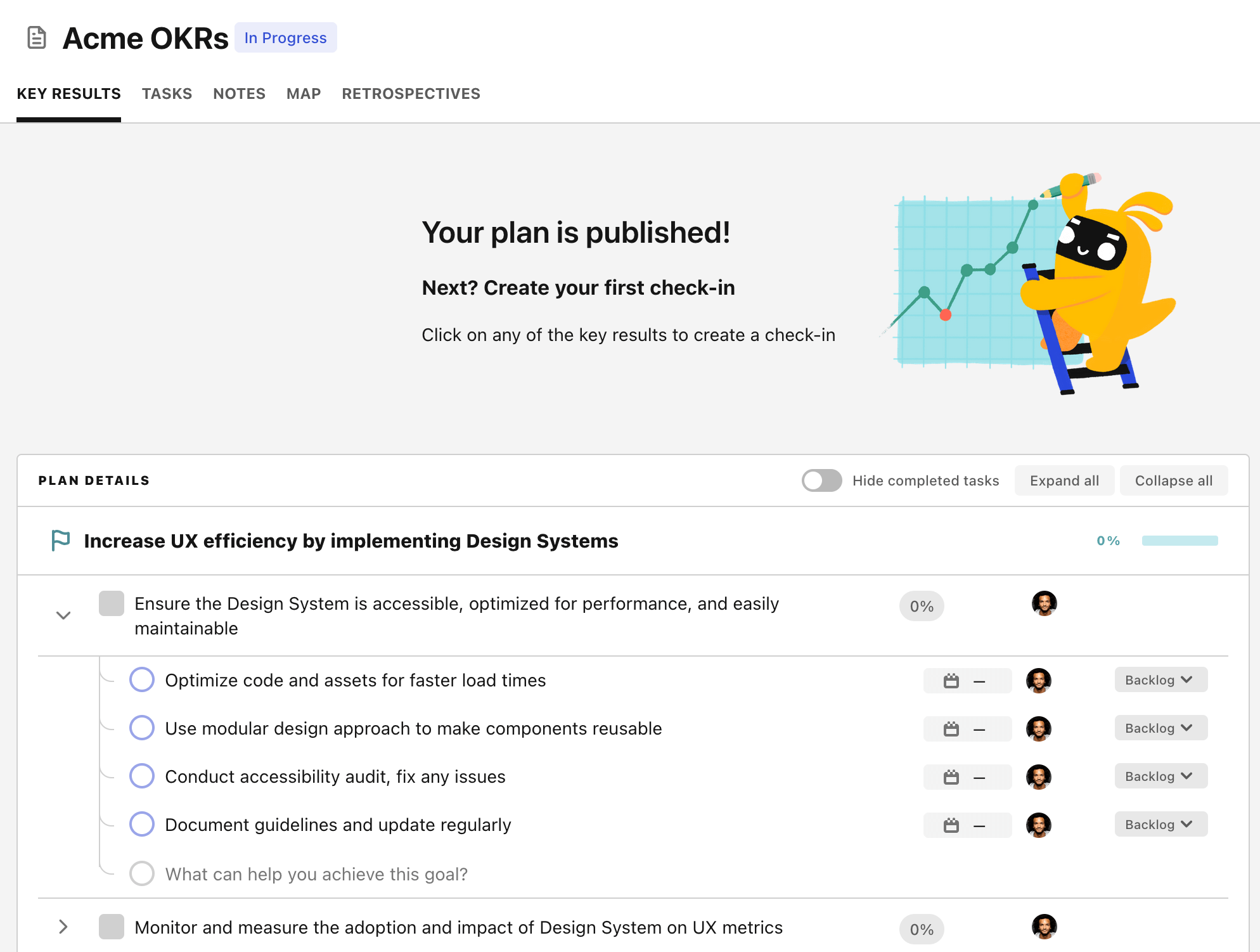OKR template to enhance the office environment to support organization's goals
Your OKR template
To do this, current workspaces will be assessed for potential ergonomic improvements and suitable solutions for flexible workstations will be researched. Implementation of these ergonomic changes and the new workstations will follow.
The second objective aims to reduce office maintenance costs by 15%. This will be achieved by adopting energy-saving practices to trim utility bills, consolidating office supplies for optimized use, and renegotiating contracts with current service providers.
Lastly, the OKR focuses on enhancing the use of existing office floor space by 20% by conducting a comprehensive evaluation of the current utilization, executing a space-saving arrangement plan, and training staff on effective space management practices.
ObjectiveEnhance the office environment to support organization's goals
KRImplement flexible workstations and improve ergonomics for all employees
Assess current workstations and identify ergonomic improvements needed
Research suitable flexible workstation solutions
Implement ergonomic changes and flexible workstation setups
KRReduce office maintenance costs by 15%
Implement energy saving practices to reduce utility bills
Consolidate office supplies and optimize usage
Negotiate contracts with current service providers
KRIncrease floor space utilization by 20%
Conduct a thorough evaluation of current floor space utilization
Implement an efficient space-saving arrangement plan
Train staff on effective space management practices
How to edit and track OKRs with Tability
You'll probably want to edit the examples in this post, and Tability is the perfect tool for it.
Tability is an AI-powered platform that helps teams set better goals, monitor execution, and get help to achieve their objectives faster.
With Tability you can:
- Use AI to draft a complete set of OKRs in seconds
- Connect your OKRs and team goals to your project
- Automate reporting with integrations and built-in dashboard
Instead of having to copy the content of the OKR examples in a doc or spreadsheet, you can use Tability’s magic importer to start using any of the examples in this page.
The import process can be done in seconds, allowing you to edit OKRs directly in a platform that knows how to manage and track goals.
Step 1. Sign up for a free Tability account
Go tohttps://tability.app/signup and create your account (it's free!)
Step 2. Create a plan
Follow the steps after your onboarding to create your first plan, you should get to a page that looks like the picture below.

Step 3. Use the magic importer
Click on Use magic import to open up the Magic Import modal.
Now, go back to the OKR examples, and click on Copy on the example that you’d like to use.

Paste the content in the text import section. Don’t worry about the formatting, Tability’s AI will be able to parse it!

Now, just click on Import from text and let the magic happen.

Once your example is in the plan editor, you will be able to:
- Edit the objectives, key results, and tasks
- Click on the target 0 → 100% to set better target
- Use the tips and the AI to refine your goals
Step 4. Publish your plan
Once you’re done editing, you can publish your plan to switch to the goal-tracking mode.

From there you will have access to all the features that will help you and your team save hours with OKR reporting.
- 10+ built-in dashboards to visualise progress on your goals
- Weekly reminders, data connectors, and smart notifications
- 9 views to map OKRs to strategic projects
- Strategy map to align teams at scale